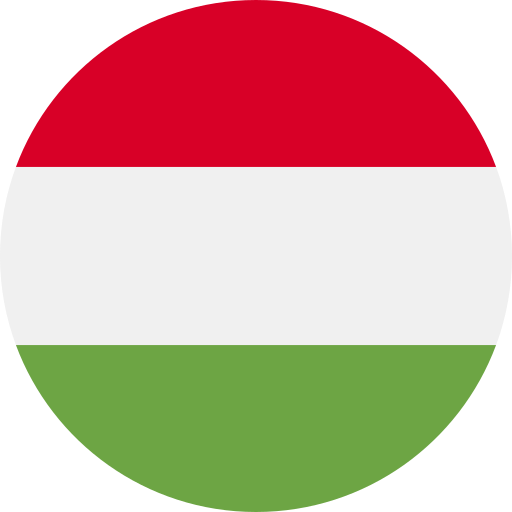Key Takeaways
- Population Overview: Approximately 13 million Hungarian native speakers exist globally, with about 9.8 million residing in Hungary, making up nearly the entire population of the country.
- Geographic Distribution: Significant communities of Hungarian speakers are also found outside Hungary, particularly in Romania (1.2 million), Slovakia (450,000), Serbia, and Ukraine.
- Demographic Trends: The demographic makeup reveals a younger generation’s increasing multilingualism while older populations maintain stronger ties to the Hungarian language.
- Cultural Impact: Hungarian native speakers contribute richly to music, literature, and traditions; cultural festivals play a vital role in preserving this heritage.
- Language Preservation Efforts: Various organizations promote Hungarian language education abroad and encourage community engagement to foster pride in their linguistic heritage.
- Challenges Faced: Language assimilation and socioeconomic factors pose significant challenges for maintaining the vitality of the Hungarian language among its speakers.
Did you know that Hungarian is one of the most unique languages in Europe? With a rich history and distinct grammar, it’s spoken by millions around the world. But just how many native speakers are there, and where do they call home? Understanding the population of Hungarian native speakers can shed light on cultural dynamics and language preservation efforts.
Overview of Hungarian Native Speakers Population
Hungarian native speakers number around 13 million globally. Approximately 9.8 million reside in Hungary, making up about 98% of the country’s population. Significant communities exist outside Hungary, particularly in Romania, Slovakia, Serbia, and Ukraine.
In Romania, over 1.2 million Hungarians live primarily in Transylvania. In Slovakia, around 450,000 native speakers form a vibrant cultural community. Also notable are the Hungarian populations in Serbia’s Vojvodina region and parts of Ukraine.
Understanding this demographic highlights the global significance of the Hungarian language and its speakers. Recognizing these communities fosters appreciation for their cultural contributions and linguistic heritage. Language preservation efforts become essential as globalization continues to impact minority languages like Hungarian.
Maintaining connections with these populations supports cultural exchange and diversity within larger societies. The distinctiveness of the Hungarian language offers valuable insights into regional histories and identities that enrich our understanding of Europe’s linguistic landscape.
Geographic Distribution
Hungarian native speakers are primarily concentrated in specific regions, reflecting the historical and cultural ties of the language. Understanding where these speakers reside offers valuable insights into community dynamics and cultural preservation.
Urban vs. Rural Populations
Urban areas host a significant number of Hungarian speakers, with cities like Budapest showcasing vibrant communities enriched by diverse cultures. In Hungary’s capital alone, nearly 1.75 million people communicate in Hungarian daily. Conversely, rural populations also maintain strong linguistic traditions. Regions like the Great Plain and Northern Hungary feature smaller communities that uphold local dialects and customs, often fostering close-knit social networks centered around shared heritage.
Global Presence of Hungarian Speakers
Globally, Hungarian speakers number around 13 million, with substantial populations outside Hungary. Romania is home to over 1.2 million Hungarians, primarily residing in Transylvania; this area boasts a rich tapestry of culture and tradition tied to its Hungarian roots. Slovakia hosts approximately 450,000 native speakers who contribute to local arts and education while preserving their unique identity. Serbia presents another notable community within Vojvodina, where about 300,000 Hungarians enrich regional diversity.
Outside Central Europe, smaller groups exist in countries like Ukraine and the United States—where recent immigrants have established thriving enclaves that promote cultural exchange through festivals and educational initiatives aimed at younger generations.
By recognizing these geographic distributions of Hungarian native speakers across urban centers and rural landscapes—and their global presence—you’ll gain a deeper understanding of how language shapes identity while emphasizing the need for preservation efforts amid changing demographics.
Demographic Trends
Understanding the demographic trends of Hungarian native speakers reveals important insights into their distribution and cultural significance. The population consists of roughly 13 million individuals, with about 9.8 million residing in Hungary, which represents around 98% of the country’s total population.
Age Distribution
Age plays a crucial role in language usage among Hungarians. Younger generations tend to embrace multilingualism, often learning English alongside Hungarian. In contrast, older populations typically maintain stronger ties to the native language. Approximately 20% of native speakers are under the age of 15, while those aged over 65 make up nearly 18%. This age distribution highlights how intergenerational communication influences language retention and cultural identity.
Educational Attainment
Educational attainment significantly impacts language proficiency among Hungarian speakers. Over half (about 54%) have completed secondary education, while around 30% hold college degrees or higher. These levels indicate a strong commitment to education within the community and contribute to maintaining the language’s relevance in global contexts. Many educational institutions emphasize Hungarian language studies, ensuring that future generations remain connected to their linguistic heritage.
Recognizing these demographic trends aids in understanding not just the number but also the vitality of Hungarian as a living language across different regions and age groups.
Cultural Impact
The cultural impact of Hungarian native speakers extends beyond language. It touches various aspects of life, including music, literature, and traditions. Understanding this influence provides insight into the deep connections within communities.
Language Preservation Efforts
Language preservation is crucial for maintaining Hungarian culture. Numerous organizations promote the teaching of Hungarian in schools abroad and offer resources for those wanting to learn or improve their skills. Community programs encourage native speakers to use their language at home and in social settings, fostering a sense of pride in Hungarian heritage. Events like cultural festivals celebrate traditions through music, dance, and storytelling, creating opportunities for younger generations to engage with their roots actively.
Influence on Local Dialects
Local dialects play a vital role in expressing regional identities among Hungarian speakers. Each area boasts unique phrases and pronunciations that reflect its history and culture. For instance, variations exist between urban centers like Budapest and rural areas such as the Great Plain. These differences enrich the language’s tapestry while strengthening community bonds among speakers who share similar backgrounds. Engaging with local dialects not only preserves linguistic diversity but also enhances understanding among different groups within the broader Hungarian-speaking population.
Challenges Faced
Hungarian native speakers encounter several challenges that impact language preservation and cultural continuity.
Language Assimilation
Language assimilation poses a significant challenge for Hungarian speakers, especially in regions where they form minority communities. As younger generations grow up in predominantly non-Hungarian environments, they often adopt the dominant language. This shift leads to reduced daily use of Hungarian, which can diminish fluency over time. In urban areas with high levels of multicultural interaction, the need to communicate effectively often results in code-switching or complete transition to the local language.
Socioeconomic Factors
Socioeconomic factors also play a crucial role in the vitality of the Hungarian language among its speakers. Economic opportunities frequently dictate language usage; individuals may prioritize learning more widely spoken languages like English or German for career advancement. Consequently, this trend can create linguistic barriers within families and communities as older generations strive to maintain linguistic heritage while younger members gravitate toward languages perceived as more beneficial economically.
These challenges highlight the necessity of proactive measures for preserving the Hungarian language amid globalization and changing societal dynamics.
Conclusion
Understanding the population of Hungarian native speakers reveals much about their cultural heritage and linguistic vitality. You’re not just looking at numbers but also at a rich tapestry of traditions and identities that shape communities across various regions. As globalization continues to challenge minority languages, recognizing these dynamics is essential for effective language preservation efforts.
By supporting initiatives that promote the use of Hungarian, you can help ensure its survival for future generations. Engaging with local dialects and celebrating cultural events fosters pride in heritage and strengthens community bonds. The journey ahead involves challenges but also opportunities to keep this unique language alive and thriving in an ever-changing world.
Frequently Asked Questions
What is the Hungarian language known for?
Hungarian is unique due to its rich history and distinct grammar. It’s part of the Finno-Ugric language family, which sets it apart from most other European languages. The complexity of its grammar and vocabulary reflects Hungary’s cultural heritage.
How many native speakers does Hungarian have?
There are approximately 13 million native Hungarian speakers worldwide. About 9.8 million of them live in Hungary, making up around 98% of the country’s population.
Where are Hungarian speakers located outside Hungary?
Significant Hungarian-speaking communities exist in Romania, Slovakia, Serbia, and Ukraine. In Romania alone, over 1.2 million Hungarians reside mainly in Transylvania.
What demographic trends affect the use of the Hungarian language?
Younger generations tend to be more multilingual while older populations maintain stronger ties to Hungarian. Approximately 20% of native speakers are under age 15, while nearly 18% are over age 65.
Why is language preservation important for Hungarians?
Preserving the Hungarian language is crucial for maintaining cultural identity and community connections. Language fosters pride in heritage and allows traditions to thrive through music, literature, and local customs.
What challenges do Hungarian speakers face regarding their language?
Language assimilation poses a significant challenge as younger generations often adopt dominant languages in their regions. Economic factors also compel individuals to prioritize more widely spoken languages for career advancement, impacting daily use of Hungarian.
How does education influence proficiency in Hungarian?
Educational attainment significantly affects language proficiency among Hungarians. Over half have completed secondary education, with about 30% holding college degrees or higher—enhancing the relevance of their language globally.
What role do local dialects play in the Hungarian-speaking community?
Local dialects contribute to regional identities within Hungary. Variations between urban and rural areas enrich the language and strengthen community bonds among speakers by reflecting unique cultural traditions.







